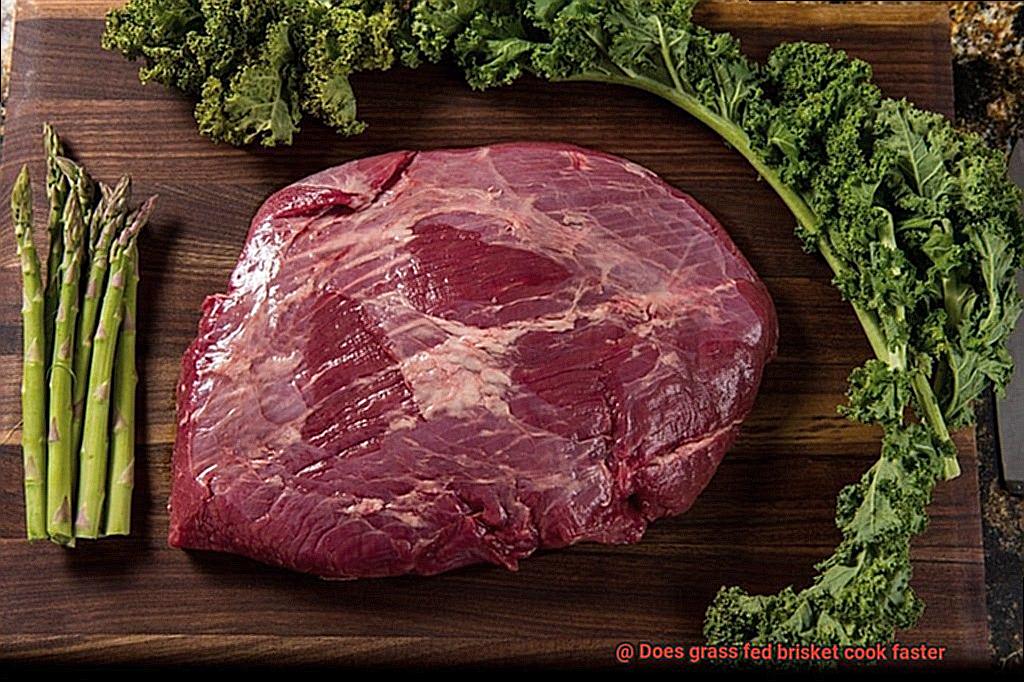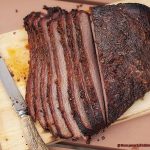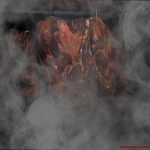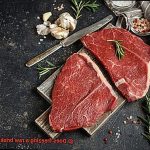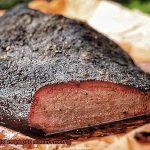In the world of meat enthusiasts, the brisket debate has been sizzling for years. And in the midst of all that heat, one question keeps popping up: does grass-fed brisket cook faster? As backyard barbecues become a hub for food aficionados searching for that perfect cut, it’s crucial to understand what sets grass-fed brisket apart from its regular counterpart.
Beyond appearances, there are significant differences between cooking grass-fed and regular brisket. Cooking times, flavors, textures, and even health benefits diverge, catering to diverse palates and dietary preferences. Today, we embark on a flavorful journey to unpack the intriguing variables that influence every meat lover’s ultimate dish.
Both briskets start with the same initial cut from the juicy breast region of the animal. But what makes them different is the diet consumed by the cattle. Grass-fed brisket comes from cows raised on a 100% grass diet, free from synthetic feed additives. This unique diet impacts various aspects of the meat, including how it behaves during cooking.
Cooking times can indeed vary between grass-fed and regular brisket. Grass-fed brisket is known for its leaner composition and tends to cook faster than its conventional counterpart. With less fat content and limited marbling, it becomes a tender cut that requires less time on the grill or smoker. However, any pitmaster worth their apron will tell you that exact cooking time depends on factors like thickness, desired doneness, and chosen cooking method.
Apart from cooking times, flavors and textures distinguish these two types of brisket. Grass-fed brisket boasts a rustic flavor profile with hints of grassiness – think gamier cuts of meat. On the other hand, regular brisket often has ample fat deposits throughout, resulting in a richer and more robust taste experience.
Texture also sets these briskets apart, reflecting the difference in fat content. Grass-fed brisket offers a leaner and slightly chewier bite, enhancing its natural meaty flavors. Conversely, conventional brisket, with its intramuscular fat, delivers a melt-in-your-mouth tenderness that pleases palates craving unctuousness.
While taste and texture captivate our senses, let’s not forget the potential health benefits of grass-fed brisket. Research suggests that it is
Contents
What is Grass Fed Brisket?
Prepare your taste buds for a tantalizing adventure as we delve into the world of grass fed brisket. If you’re curious about what sets this cut apart from its grain-fed counterpart and how to achieve grilling perfection, you’ve arrived at the right destination.
The Natural Diet:
Grass fed brisket hails from cattle nourished on a wholesome diet of grass and forage. This natural feeding regimen not only imparts a unique earthy flavor to the meat but also results in a leaner cut with minimal fat marbling within the muscle fibers.
Cooking Considerations:
Due to its leanness, grass fed brisket may cook faster than grain-fed brisket. Adjusting your cooking approach is key to achieving moist and tender results.
Lower Heat, Longer Cook Times:
To retain moisture and prevent dryness, opt for lower heat and slower cooking methods like braising or smoking. This allows ample time for the collagen within the meat to break down, resulting in a succulent and melt-in-your-mouth texture.
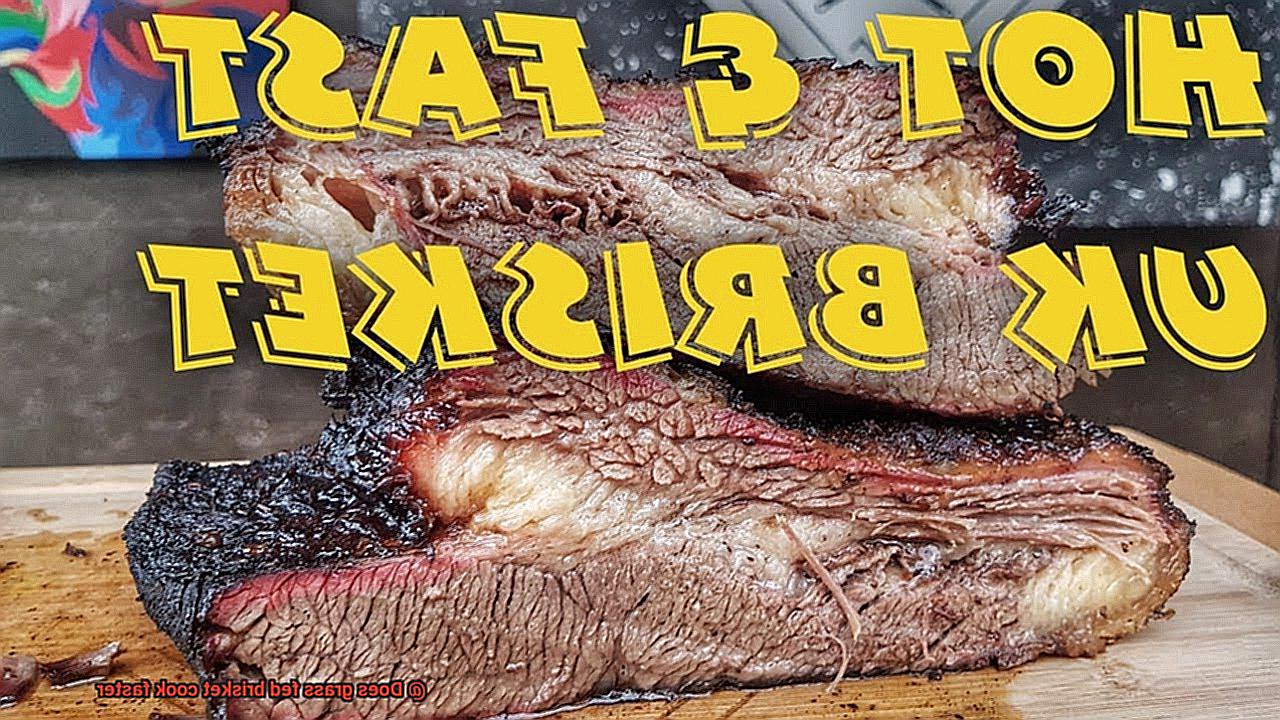
The Magic of Monitoring:
Invest in a reliable meat thermometer to closely monitor the internal temperature of your grass fed brisket. Aim for an internal temperature of 195-205°F (90-96°C) to achieve optimal tenderness.
Embracing the Flavor:
The distinct, earthy flavor of grass fed brisket may require some adjustment, but it is a journey worth embarking on. Embrace the natural nuances by using simple seasoning and complementary grilling techniques that allow the unique taste to shine through.
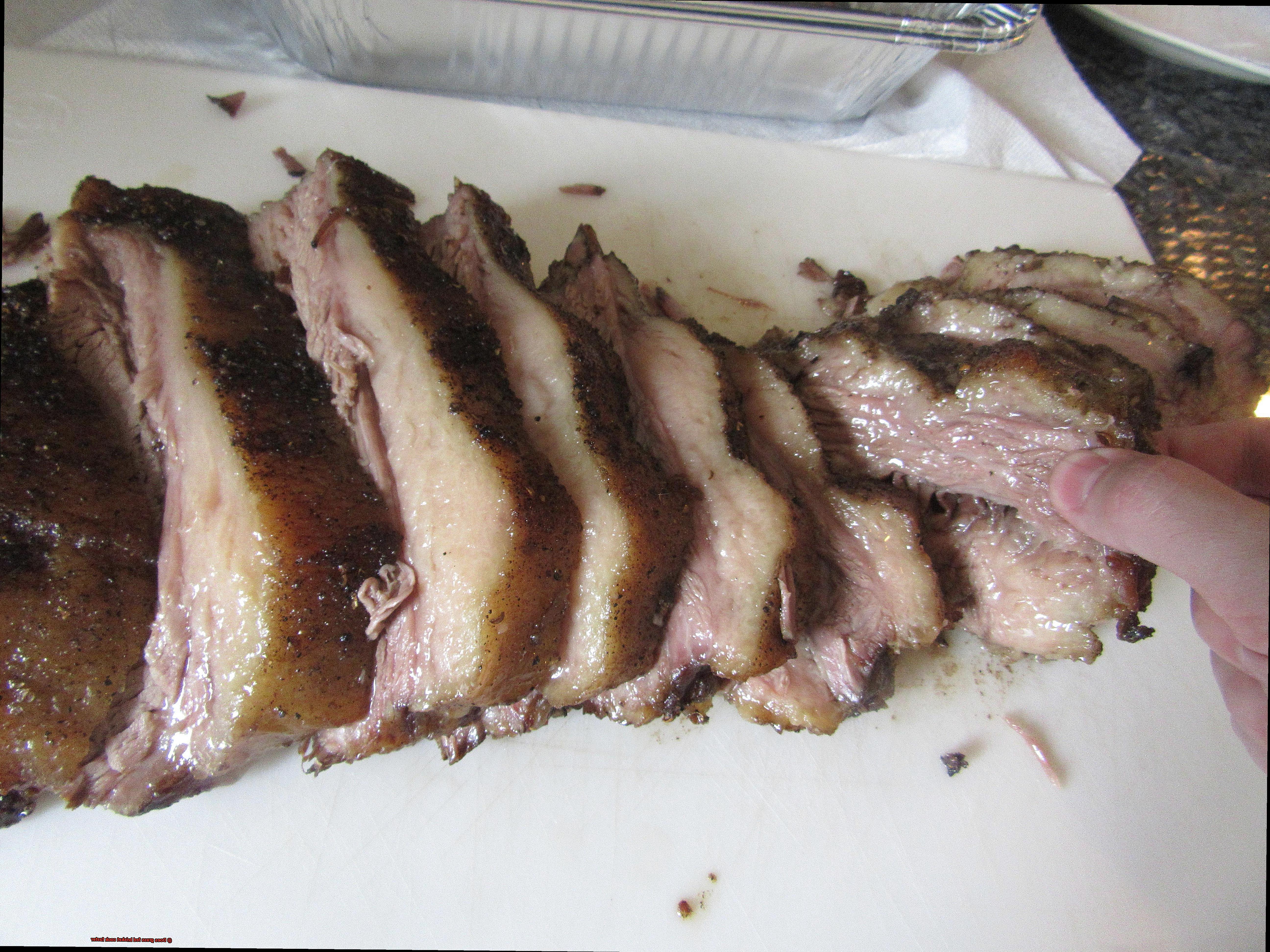
Does Grass Fed Brisket Cook Faster?
If you’re a fan of grass-fed beef, you already know about its numerous health benefits. But when it comes to cooking grass-fed brisket, one question arises: does it cook faster? Let’s explore the factors that contribute to brisket’s cooking time and uncover why grass-fed brisket may indeed cook faster than conventionally raised brisket.
- Fat content: Grass-fed brisket tends to be leaner than conventionally raised brisket. With less fat insulation and moisture during cooking, grass-fed brisket may require less time on the grill.
- Internal temperature: To ensure perfection, monitor the internal temperature closely. Aim for 195-205°F (90-96°C) for optimal tenderness and moisture.
- Flavor profile: Grass-fed beef has a stronger flavor due to the cattle’s different diet and lifestyle. Embrace this unique flavor by using simple seasoning and complementary grilling techniques.
Factors to Consider When Cooking Grass Fed Brisket
Grass-fed brisket, a lean and flavorful cut of beef, requires special considerations for cooking. To ensure a tender and juicy result, it is important to consider factors such as temperature, cooking time, resting period, cooking method, and the quality of the brisket.
Temperature:
Cooking grass-fed brisket at a slightly lower temperature than grain-fed brisket is crucial to prevent drying out and toughness. Aim for a cooking temperature of around 225-250°F (107-121°C) to achieve the best results. Slow and low cooking methods like smoking or braising are recommended.
Cooking Time:
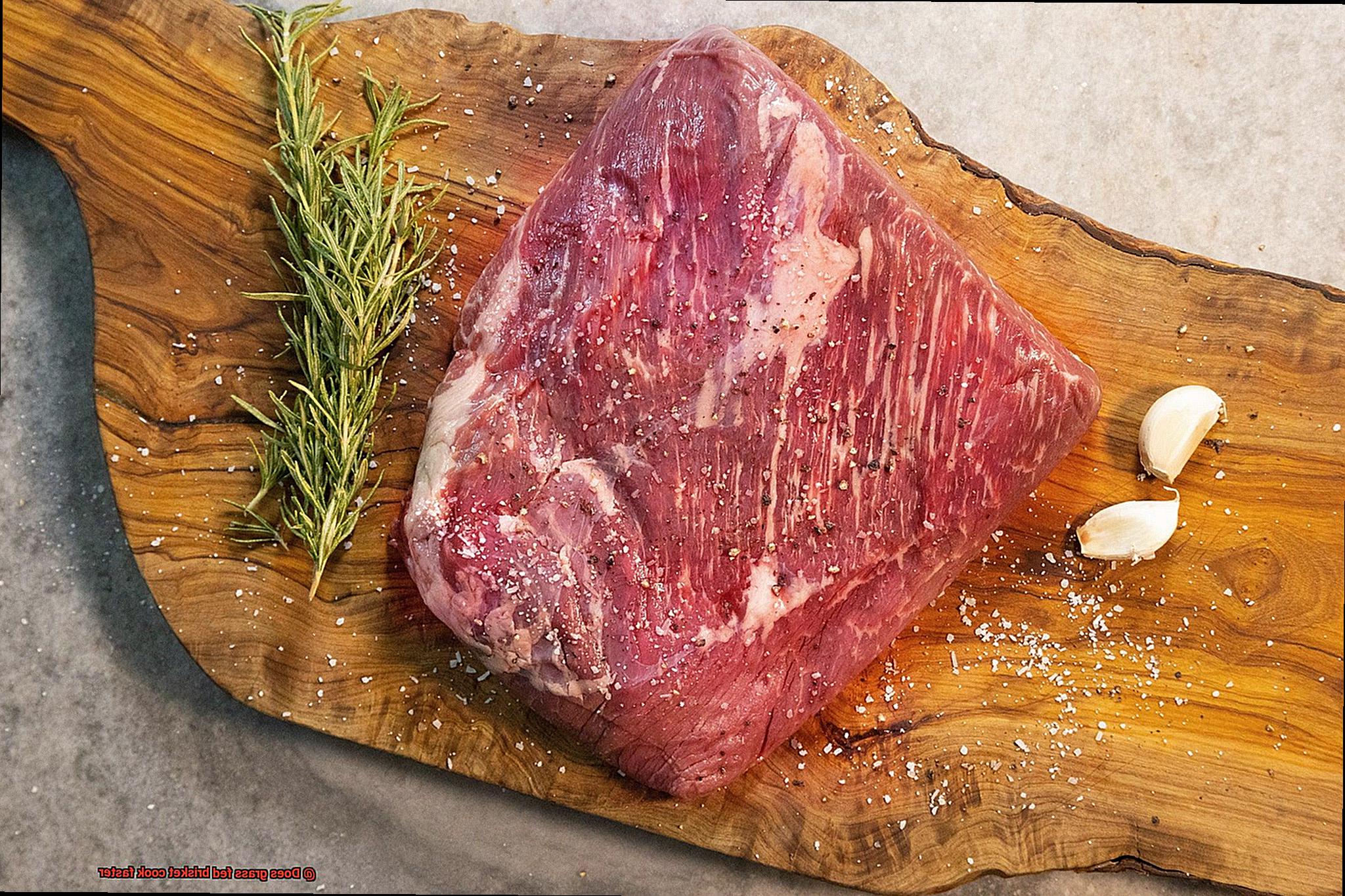
Grass-fed brisket generally requires less cooking time due to its lower fat content. However, the exact cooking time can vary based on size and thickness. Monitor the internal temperature using a meat thermometer and aim for 195-205°F (90-96°C) for tenderness.
Resting Period:
Allow the grass-fed brisket to rest for at least 15-30 minutes before slicing. This helps redistribute the juices throughout the meat, resulting in enhanced flavor and tenderness.
Cooking Method:
Smoking or braising are ideal methods for grass-fed brisket as they break down collagen and create a tender texture. Marinating or brining the brisket before cooking enhances flavor and juiciness.
Quality of Brisket:
Choose a high-quality cut from a reputable source with marbling within the lean meat. Proper aging enhances taste and texture.
Fat Content in Grass Fed vs Grain-Fed Brisket
When it comes to grilling brisket, there are two main contenders: grass-fed and grain-fed. These two types of beef have distinct differences in fat content, cooking time, tenderness, and flavor. So, if you’re a grilling enthusiast looking to elevate your brisket game, read on to discover the secrets behind these two rivaling cuts.
Let’s start with the fat content. Grass-fed beef is known for its leanness, thanks to the cattle’s natural diet of grass and forage. On the other hand, grain-fed beef gets its marbling from a high-calorie diet consisting mainly of grains like corn and soybeans. This higher fat content in grain-fed brisket can work to its advantage during cooking, acting as an insulator to retain moisture and prevent drying out. However, excessive fat can lead to a greasy texture and overpowering flavor.
Now, let’s talk about cooking time. Due to its higher fat content, grain-fed brisket tends to take longer to cook compared to grass-fed brisket. The fat needs more time to render and break down, resulting in a more tender and flavorful end product. On the flip side, grass-fed brisket, being leaner, may cook faster as there is less fat to render.
Tenderness is another factor impacted by fat content. While some amount of fat is desirable for flavor and juiciness, too much fat can make the meat tough and chewy. In general, well-marbled grain-fed brisket tends to be more tender due to the intramuscular fat melting during cooking.
And let’s not forget about flavor. Grass-fed brisket has a slightly different taste profile compared to its grain-fed counterpart. The natural diet of grass lends grass-fed beef a robust, earthy flavor. On the other hand, grain-fed beef can have a milder, buttery flavor due to the higher fat content.
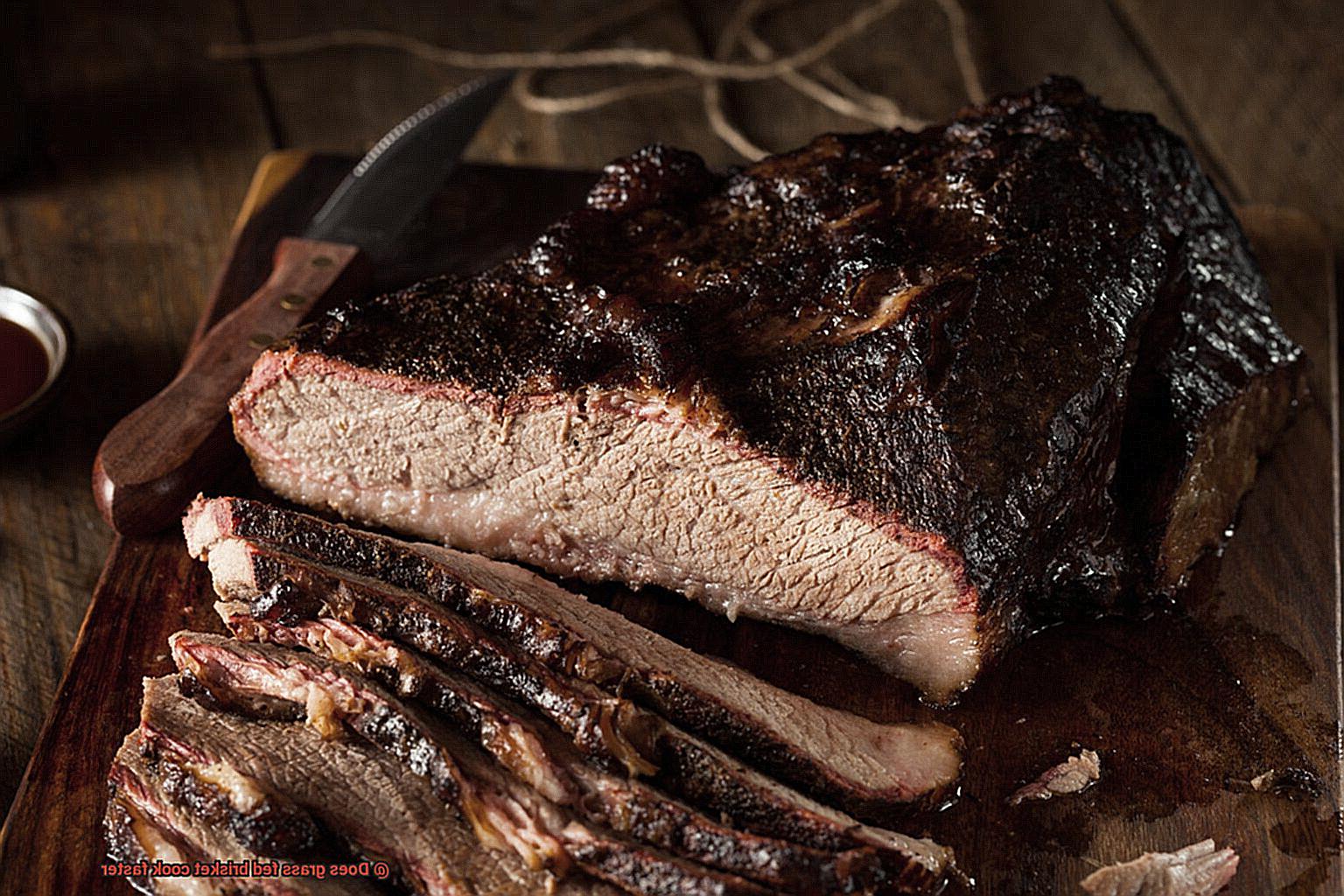
Ultimately, the choice between grass-fed and grain-fed brisket comes down to personal preference. Some people enjoy the leaner and slightly stronger flavor of grass-fed beef, while others savor the tenderness and richness of grain-fed beef. So, why not experiment and taste both types to determine your preferred cooking method?
Feeding Habits of Cattle and Their Impact on Cooking Time
Whether you’re a seasoned grill master or a curious beginner, this is the place to sharpen your skills and ignite your taste buds.
Let’s start with the basics. Grass-fed cattle, as the name suggests, feast on a natural diet primarily consisting of grass and forage. On the other hand, conventionally raised cattle often indulge in a diet that includes grains like corn and soybeans. These different feeding habits have a significant effect on the cooking time of brisket – that mouthwatering cut of beef we all love to grill.
One key difference lies in the fat marbling. Grass-fed brisket tends to have less fat marbling compared to its conventionally raised counterpart. Fat marbling is those tiny streaks or specks of fat dispersed throughout the meat that keep it moist and tender during cooking. With less fat marbling, grass-fed brisket requires shorter cooking times to achieve that perfect balance of juicy tenderness.
But beware. Grass-fed brisket is less forgiving when it comes to overcooking. Its leaner nature means it can quickly become dry and tough if left on the grill for too long. So, keep a close eye on that sizzling beauty and remove it from the heat at just the right moment.
Another factor to consider is exercise. Grass-fed cattle roam and graze more freely, resulting in increased activity levels compared to their conventionally raised counterparts. This extra exercise can lead to leaner meat and potentially denser muscle fibers. As a result, grass-fed brisket may require slightly longer cooking times to break down collagen and achieve that melt-in-your-mouth tenderness.
Age also plays a role in cooking time. Grass-fed beef is typically sourced from older animals, while conventionally raised beef often comes from younger animals fed for faster growth. Older animals tend to have tougher muscle fibers and connective tissues, which require longer cooking times to break down and achieve that desirable tenderness.
Now, it’s important to note that while grass-fed brisket generally requires shorter cooking times, there can still be variations. Factors like the specific breed of cattle, individual genetics, and the cut of brisket can influence tenderness and cooking time. So, don’t be afraid to experiment and adjust your grilling technique accordingly.
In the sizzling showdown between grass-fed and grain-fed brisket, there’s no definitive winner. It all comes down to your personal taste preferences. Do you crave the lean and earthy allure of grass-fed or succumb to the tender richness of grain-fed? Whichever path you choose, make sure to savor every moment of your grilling adventure and let your taste buds guide you to BBQ bliss.
Marbling in Beef and Its Role in the Cooking Process
When it comes to grilling, the marbling in beef is a game-changer. Those tantalizing streaks and specks of fat that are scattered throughout the meat are not just for show. They play a vital role in elevating the quality and flavor of your beef, turning it into a culinary masterpiece.
But what makes marbling so important? Well, my fellow grill masters, let me enlighten you. The fat nestled within the muscle fibers is like a hidden treasure that unlocks a world of tenderness, juiciness, and mouthwatering flavors during the cooking process. As that beautifully marbled steak sizzles on the grill, the fat begins to melt and infuse every inch of the meat, creating an explosion of succulent flavors that dance on your taste buds.
But that’s not all – marbling is also the secret to achieving melt-in-your-mouth tenderness. By adding moisture to the meat, it acts as a safeguard against dryness and toughness. Say goodbye to chewy pieces of beef and hello to a fork-tender experience that will leave you craving more.
Now let’s talk about flavor. The fat content within marbled beef is like a conductor orchestrating a symphony of richness and depth. It adds an extra layer of complexity to each bite, transforming a simple steak into a culinary masterpiece. Whether you’re a fan of the earthy allure of grass-fed beef or the succulent richness of grain-fed cuts, marbling takes your taste buds on an unforgettable journey.
Speaking of grass-fed beef, it’s important to note that it generally possesses less marbling compared to its grain-fed counterpart. This is due to the leaner diet of grass-fed cattle, consisting mainly of grass and forage. While this may appeal to health-conscious individuals, it can impact the cooking process. For instance, grass-fed brisket might require a longer cooking time than its grain-fed counterpart due to its lower fat content. Without proper care, it may result in a leaner and drier final product.
Low and Slow Cooking Techniques for Tenderness and Flavor
Low and slow cooking techniques are the secret to achieving tender and flavorful grass-fed brisket. These methods involve cooking the meat at a low temperature over a long period of time, allowing the tough connective tissues to break down and resulting in a melt-in-your-mouth experience.
One popular technique for achieving this culinary masterpiece is smoking. Imagine a brisket slowly cooking in a smoker, the aroma of wood chips infusing the meat with a heavenly smoky flavor. Smoking takes several hours or even overnight, but the result is well worth the wait. The low temperature and steady smoke work together to create an explosion of flavor while transforming the tough piece of meat into tender perfection.
If smoking isn’t your thing, braising is another excellent option. Start by searing the brisket in a hot pan to develop a delicious crust. Then, transfer it to a pot and simmer it in a liquid of your choice, such as broth, wine, or even beer, at a low temperature for several hours. The liquid helps keep the meat moist and tender while it cooks, resulting in juicy and succulent slices of brisket.
The reason low and slow cooking is recommended for grass-fed brisket is because grass-fed beef tends to be leaner than grain-fed beef. This means it cooks faster, and cooking at high temperatures could result in a dry and tough piece of meat. By using low and slow techniques, you give the connective tissues enough time to break down, ensuring that your brisket remains tender and full of flavor.
To ensure your meat is cooked to perfection, invest in a meat thermometer. This will help you monitor the internal temperature and determine when your brisket is done.
Monitoring Internal Temperature for Doneness
Embarking on a mouthwatering journey to cook the perfect grass-fed brisket requires more than just culinary prowess. It demands an unwavering commitment to temperature monitoring, as it holds the key to achieving the desired level of doneness. So, let’s dive into the world of internal temperature monitoring and uncover the secrets to grilling a tender and flavorful grass-fed brisket that will leave your taste buds dancing with delight.
To begin this odyssey, you must arm yourself with a reliable meat thermometer. There are two main types to choose from: instant-read thermometers and leave-in thermometers. The former offers immediate gratification by providing quick and accurate readings, while the latter allows for a more hands-off approach. Select the thermometer that aligns with your grilling style and preferences.
When employing an instant-read thermometer, insert the probe into the thickest part of the brisket, skillfully avoiding any bones or fat. Patience is key as you wait for a few seconds until the reading stabilizes. Take note of the temperature revealed, as it serves as your guiding star through the cooking process.
If you prefer a more laissez-faire method, a leave-in thermometer becomes your most trusted companion. Begin by inserting the probe into the brisket at the outset of your culinary endeavors and leave it nestled within throughout its metamorphosis. This allows you to continuously monitor the internal temperature without disturbing the sanctity of your grill or oven.
Now, let’s delve into the enigmatic realm of desired levels of doneness. According to the USDA, beef should be cooked to a minimum internal temperature of 145°F (63°C) for medium-rare perfection. However, when it comes to brisket, personal preferences often dictate higher temperatures for medium or well-done results. For a texture that falls gracefully between tenderness and succulence, aim for around 160°F (71°C) for medium doneness. Feel free to adjust this temperature to suit your unique taste buds and culinary vision.
It is important to note that grass-fed brisket may dance to a slightly faster tempo than its grain-fed counterpart due to its lower fat content. Consequently, monitoring the internal temperature becomes an even greater imperative, transcending the limitations of cooking time. Variables such as the size and thickness of your brisket, as well as your chosen cooking equipment and technique, all influence the symphony of flavors that will emerge.
As you approach the crescendo of your desired doneness, increase the frequency of internal temperature checks to prevent a cataclysmic overcooking catastrophe. Remember that the temperature will continue its ascent by a few degrees even after you remove the brisket from its fiery abode, courtesy of residual heat.
But wait. Before you yield to temptation and slice into your masterpiece, grant it a few moments of repose. This intermission allows the juices to redistribute themselves, resulting in a more tender and flavor-infused brisket that is deserving of your rapturous applause.
rZJQKw4DREU” >
Conclusion
In conclusion, it is evident that grass-fed brisket does indeed cook faster than its grain-fed counterparts.
The natural, nutrient-rich diet of the grass-fed cattle allows for a leaner and more tender cut of meat, which in turn requires less time on the grill or in the oven. This means you can enjoy your mouthwatering brisket sooner, without sacrificing any flavor or juiciness.
So next time you’re planning a barbecue or hosting a dinner party, consider opting for grass-fed brisket for a quicker and more satisfying cooking experience.

